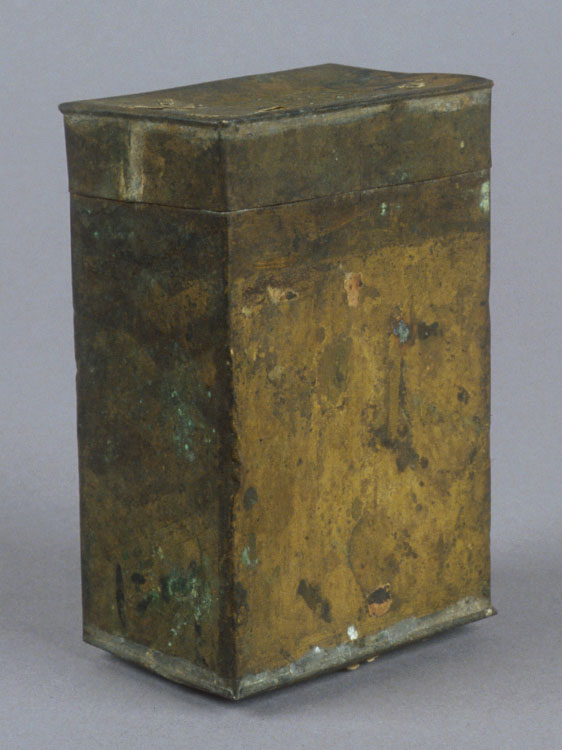By O.S. Van Olinda
Some 13 years after the first settlement was made on Vashon, the summer of 1891 to be exact, J.E. Mace bought a 10-acre tract of wild land in what was then known as the “Vermontville settlement,” now the Glen Acres district.
Thirteen years wasn’t really much time in those days, when homes had to be carved and grubbed from the virgin forest, the popular tools being the axe and grub hoe, and our Islands were still something above 98% timberland.
In those days, too, everything which came to the farmer’s meat house was meat. In other words, Vashon farmers made use of every available thing which came to hand, and wasted little.
Mace, at heart a pioneer, had few resources, and almost every Sunday would see him combing the beach, where he picked up quantities of lumber and often other articles of which he could, and did, make use.
Thus it happened that he was taking his usual stroll on the beach one fine Sunday morning in the early spring of 1895 and came upon a strong canvas sack which contained something very heavy.
He dragged it a little way up from the tide and carefully cut the strong cord with which it was tied – the sack would come in handy at “tater diggin’ time”– and found a number of small tin cans, 80 when he counted them, weighing about one pound each, each very neatly and carefully wrapped in oiled paper, but with no label or mark of any nature to disclose what they might contain.
He cut open the top of one of the cans with the large blade of his pocketknife and found it filled with a yellowish-brown, pasty mass which had little odor, and he was no wiser than when he had first found the sack.
He carried the sack of cans up off the beach a short distance on the south side of Dilworth Point, hid it under a large log and, taking the can he had opened, went up the hill to the home of a neighbor, John Hopkins, and asked him if he knew what queer kind of “putty” it was.
Hopkins was an Englishman, widely traveled and of education and experience. He took one glance at Mace’s “putty” and told him that it was opium.
Mace knew that there “was a law,” but he didn’t know a thing as to its details. He went back and carried the sack of dope up the hill and showed his find to Asa Start, an old friend and neighbor who lived directly across the road from his own place.
They buried the stuff on Start’s place, making a rough map and marking the spot where it was hidden, so that it could be easily found again. This map Mace gave to his wife, telling her to give it to anyone who might come around looking for the stuff – if such should happen – and he took the next morning boat for Seattle to learn his rights and duties in regard to it.
Two strangers had been for several days roaming over the Island, ostensibly looking for a tract of land to suit them, but in talking with the farmers, invariably bringing the conversation around to the subject of smugglers and dope-running. They put in an appearance at the Hopkins place on the very morning on which Mace left for Seattle and, after some small talk, asked Hopkins if he had ever heard of any dope showing up on the Island. He told them of Mace’s find of the day previous.
They lost no time in getting up to Mace’s place and exchanged knowing glances when missus Mace told them that Mister Mace was “not at home.” After considerable questioning, they told her they were officers looking for opium, which was supposed to be in Mace’s possession. She said she knew nothing whatever of it, but showed them the map which Mace had given her. They wasted no more time in conversation, but at once resurrected the dope and carted it off to Seattle.
So, Mace returned to his grub hoe and stumps, a little poorer but much – very much – wiser. He conveyed the impression to his neighbors by the use of numerous lurid adjectives, not really naughty as he was a good Baptist, but forcible, satisfying and to the point, that next time, if any, things would be decidedly different.
History repeated itself so quickly in this instance that it might almost be said to have stuttered. Three weeks after his first adventure in the suppression of the dope evil, Mace was again devoting himself to the business and pleasure of combing scantlings and other flotsam and jetsam from the beach, when he came upon another heavy canvas sack, identical with his first find.
This time, he carried it up into the timber and quickly and skillfully concealed it, doing it as he said, “with one hand so that even his other hand didn’t know what was going on,” and he took counsel with no one.
The following morning, he disturbed the slumbers of his son, Ed, at an early hour with orders to row him down to Vashon landing in time to catch the Iola. Just off the south side of Dilworth Point, he had his son beach the boat while he carried one heavy canvas sack, which might have contained clams, but which really was something vastly different from clams.
On reaching Vashon dock, the sack was transferred to the little steamer, to Seattle, and then up to the Customs Office, where he turned it in and made his claim for the reward allowed by law. On a court order by judge Hanford, in June 1895, Mace received $175 for turning in his “brown putty.” It was reported at the time to have sold for $564.

